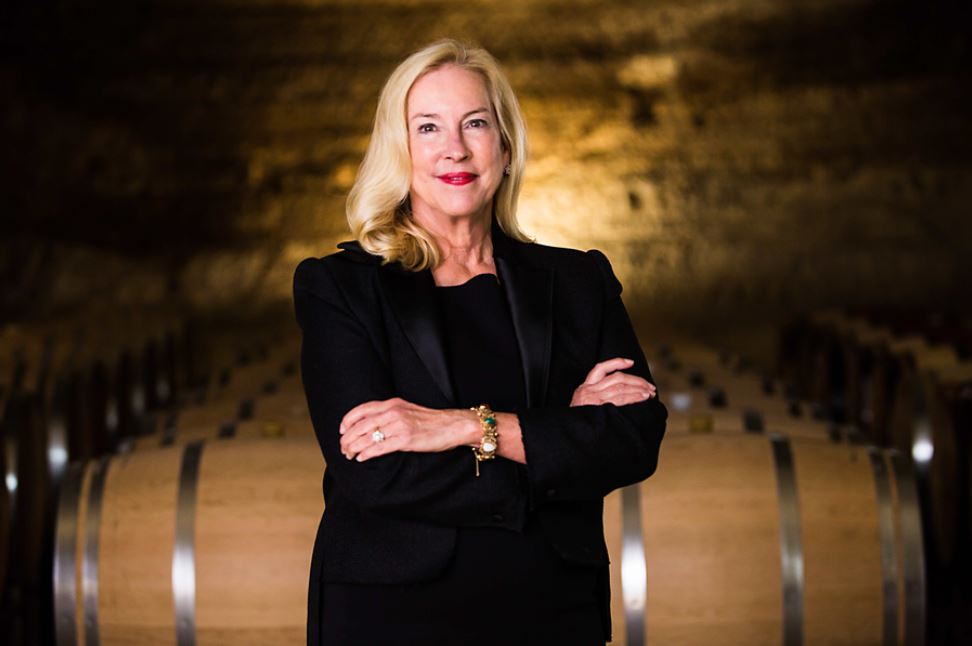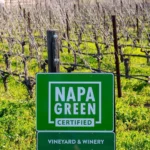napa GREEN WINERY CERTIFICATION
The Napa Green Winery standards were first launched in 2008, when Yvon Chouinard, Founder of Patagonia, observed, “I’ve been at this for 30 years and this is the best, most well-thought-out program I’ve ever seen.”
Making an exceptional wine requires stewardship and attention to detail. The same is true of achieving Napa Green Winery certification. Your whole facility is third-party certified, from the cellar to offices to tasting room and outdoor landscaping. Engineering and winemaking consultants are available to help with every step of the certification process.
Napa Green Winery members implement >140 leading practices. Some of these are established industry best practices, so no one is starting from the ground floor. Critically, Napa Green Wineries track their performance – energy, water, waste diversion, Scope 1 & 2 emissions – to ensure these practices are achieving real results and continuing improvement over time.
Benefits to the Bottom Line
Some of the greatest opportunities for significant cost savings are in the winery, by dialing in energy and water efficiency through improved awareness, monitoring, and maintenance.
Take for example two wineries we worked with both making ~25,000 cases of wine. One was using 28 kWh/case of electricity, and the other was using 8 kWh/case of electricity. That energy delta of 20 kWh/case amounts to an annual cost savings of >$200,000 for the more efficient winery. That is not to say that every facility and operation can have the same efficiencies, but baselining resource use against your peers and taking advantage of savings opportunities can have a significant payback.


Elements of Climate-Smart Winery Certification
We cannot have environmental or economic sustainability without social sustainability. True sustainability requires caring for the health and resilience of our environment, and the health and resilience of our employees and community, all of which contributes to the success and longevity of our businesses.
Energy may not seem like a particularly sexy topic, but it will be when you cut your energy bill by 20% or more! Saving energy is important for both environmental protection and economic reasons. It reduces air and water pollution, conserves natural resources, and helps to mitigate climate change.
Water is the resource arguably most impacted by climate change…and regulations. The biggest winery water users are sanitation & decorative landscaping. Water efficiency can help reduce the burden of the Water Board’s winery WDR, and forthcoming Groundwater Sustainability pumping reduction guidelines. Saving water also saves energy to transport, heat, and treat that water, saving $$ and emissions.
Wineries have significant purchasing power. Napa Green works with members to help them green their supply chain and shift to environmentally preferable products. Anywhere from 40-60% of vineyard & winery emissions are from packaging and distribution, making packaging materials a core opportunity area. Beyond the supply chain, we want to make sure you recycle and compost as much as you can, diverting waste from the landfill, saving space and preventing emissions. Napa Green will also connect you with regional opportunities, like joining the Zero Waste Collective.
Every element of our standards are tied to climate action. Leading practices for water and energy efficiency, reducing waste, green purchasing, cultivating soil health and biodiversity, and caring for and engaging teams all relate to reducing and drawing down emissions and building more resilient farms and businesses.
Leadership & Sustainability Engagement
At Napa Green we believe it is critical to take a whole system approach to being a sustainable and climate smart business. It is vital that leadership send a clear message that sustainability is embedded in organizational DNA and future success, ideally creating team and business KPIs for resource efficiency, emissions reduction, and cost savings, which can be reinvested in continuing improvement. Creating empowered “Green Teams” will contribute to innovation and momentum.
If you would like to dig deeper and explore the certification standards please Enroll Now or Download the standards.
There is no obligation if you enroll.
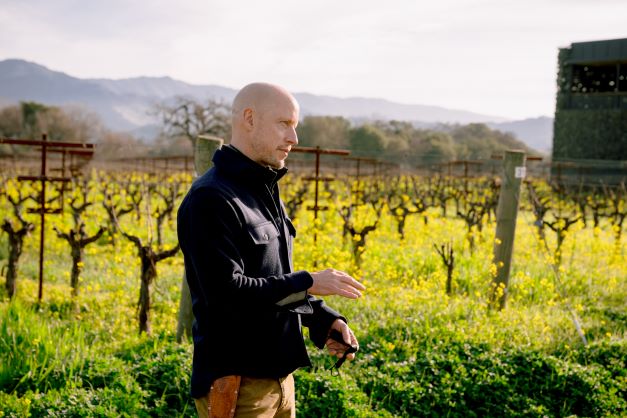

Why work with us?
Integrated Resource Assessment
Receive a one-stop, whole system energy, water, materials management and Scope 1 &2 emissions assessment with an experienced engineer. Establish metric baselines to track improvements over time, and see how you compare to your peers. Identify no- and low-cost opportunities and available incentives (e.g., EV charger rebates).
consumer values
The sales of sustainability-marketed products are growing 2.3x faster than conventional counterparts according to the annual Sustainable Market Share Index, which reviews over 70,000 consumer-packaged good SKUs. Meaningful third-party certification is a chance to not only build more resilient vineyards and businesses, but also differentiate your wines and tell new stories.
return on investment
We have helped members identify more than $5,000,000 in energy cost savings, rebates, and improved efficiency opportunities. We’ve also helped members access new markets, retailers, and restaurants that are seeking rigorous third-party sustainability certification (e.g., Systembolaget, Nugget Markets).
Cutting Emissions
At Napa Green, we aim to help the community and customers think from soil to bottle, from the vineyard through production, to when the bottle reaches the table. On average, anywhere from 40-60% of vineyard and winery emissions are from packaging and distribution alone. As a part of your Napa Green Winery certification we’ll do a Scope 1 & 2 emissions review (direct onsite energy use, and purchased off-site energy).
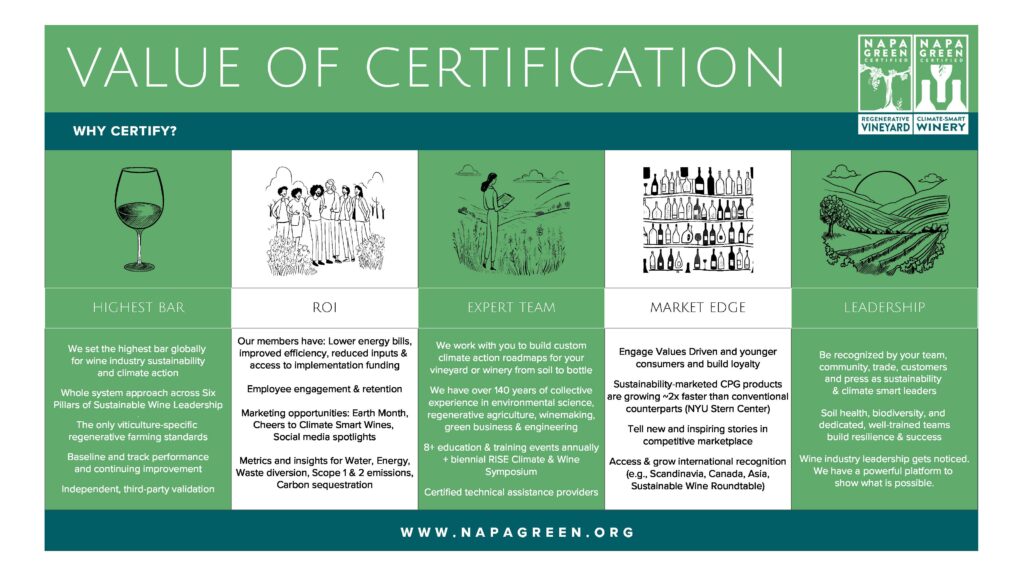
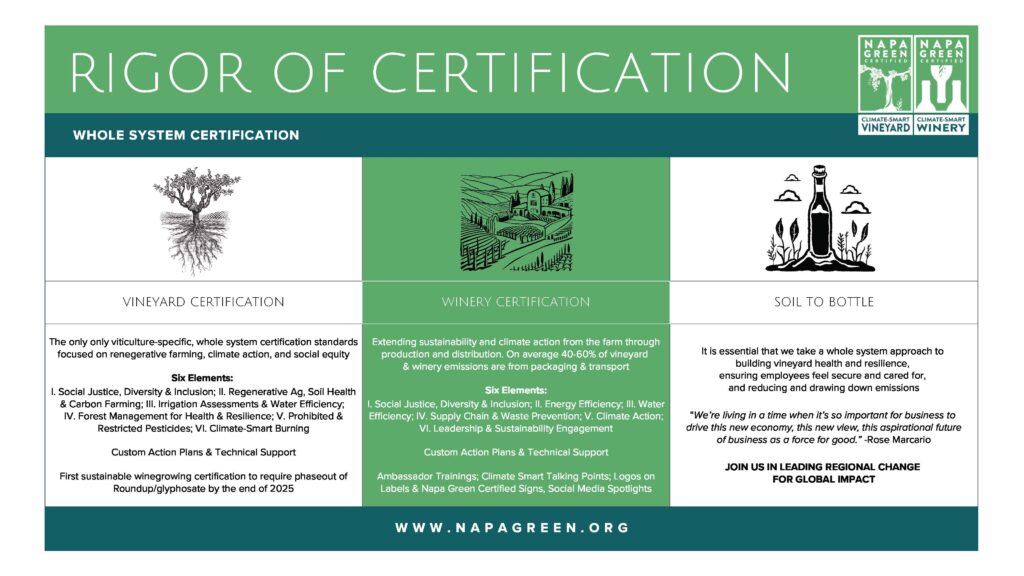
Or learn about the Napa Green Certified VINEYARD Program
napa GREEN WINERY CERTIFICATION costs
annual LICENSING FEES
Billed annually, these fees cover a fraction of our expert staff time to facilitate certification and annual desk audits, develop resources, training and education workshops & events, and communicate the climate action leadership of our members.
Integrated Resource Assessment
Onsite Assessment & Report
+Review with Team (every 3 years)
The IRA is a unique value-add expert service led by our winery team of engineers & winemakers. The IRA baselines and tracks your resource metrics and identifies opportunities to improve efficiency and save $$$. Fully leveraged, the IRA should more than pay for itself, and the data and feedback can be used internally and externally to tell your climate action story.
Member Cost Estimates
*Estimates for initial certification. Time & costs lower for recertification
Third-Party Auditor Independent Validation of Practices (every 3 years)
Independent validation that you are meeting Napa Green Vineyard practice and performance-based standards, walking the talk, is critical to marketplace assurance. Our network of third-party auditors have gone through training in the Napa Green programming, and will validate implementation of practices that our team has not been able to review.
